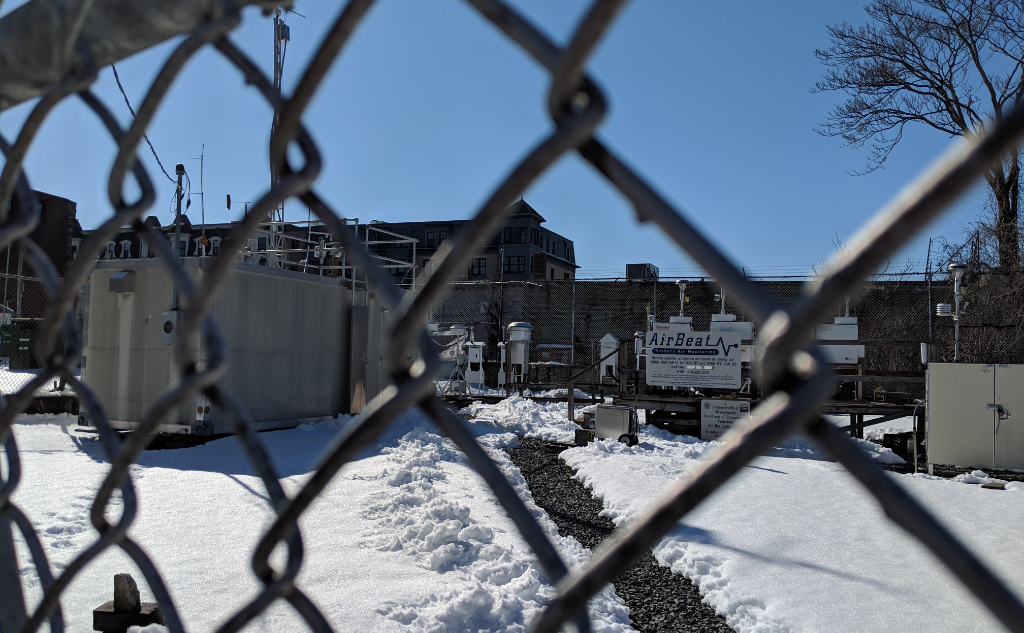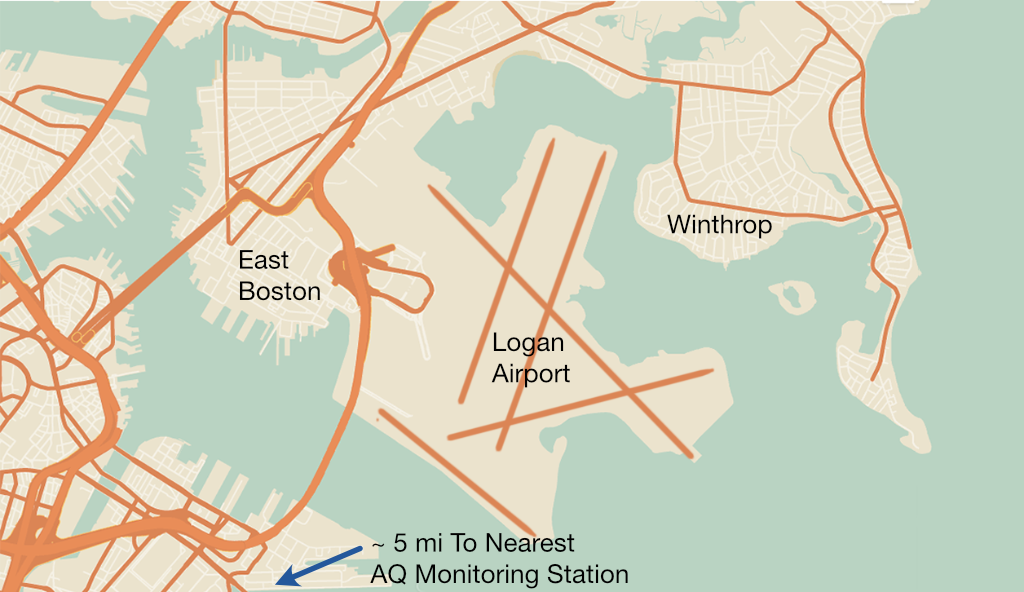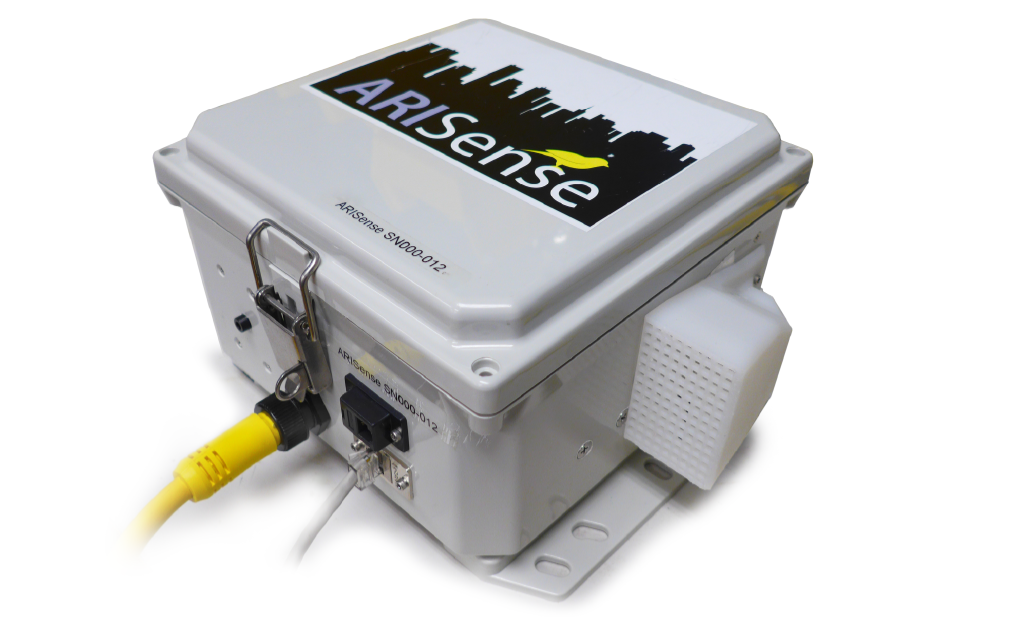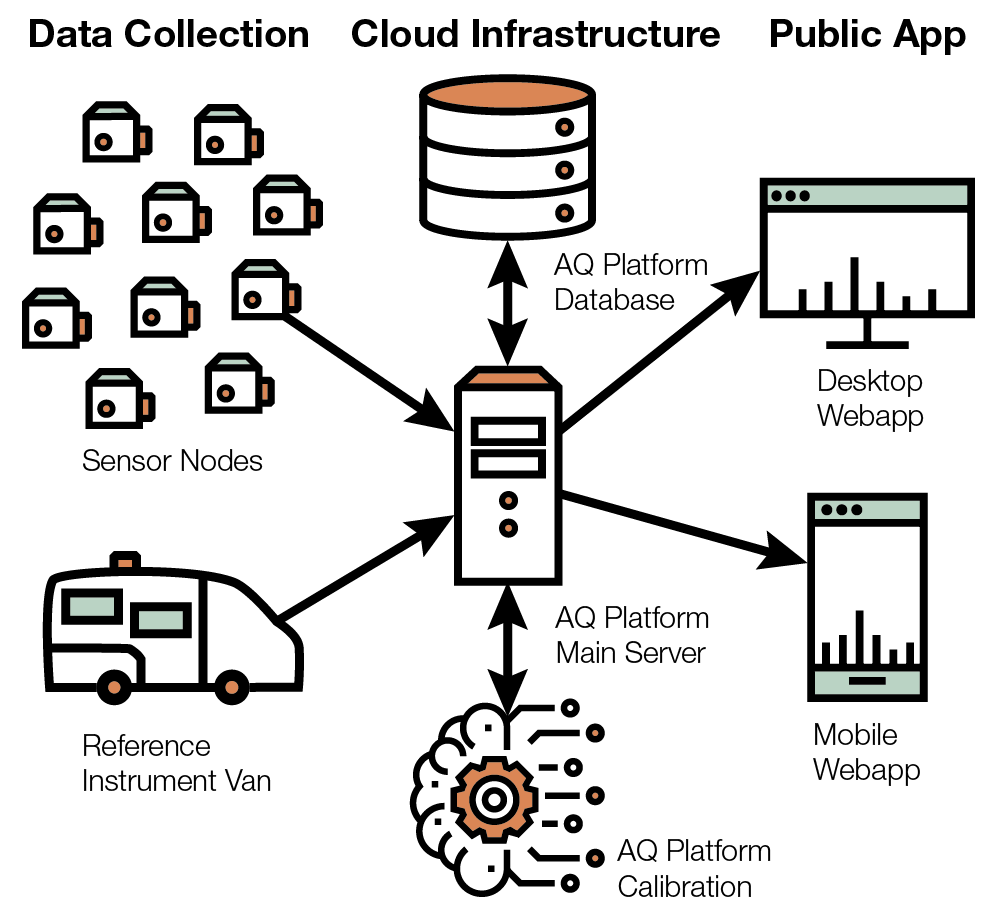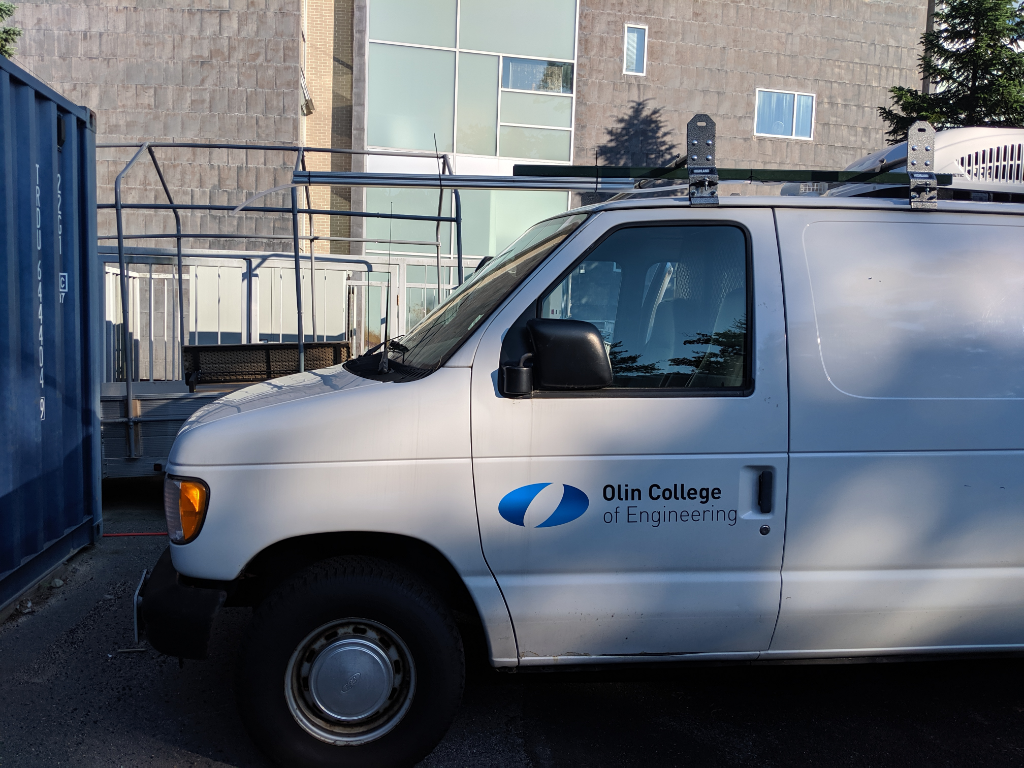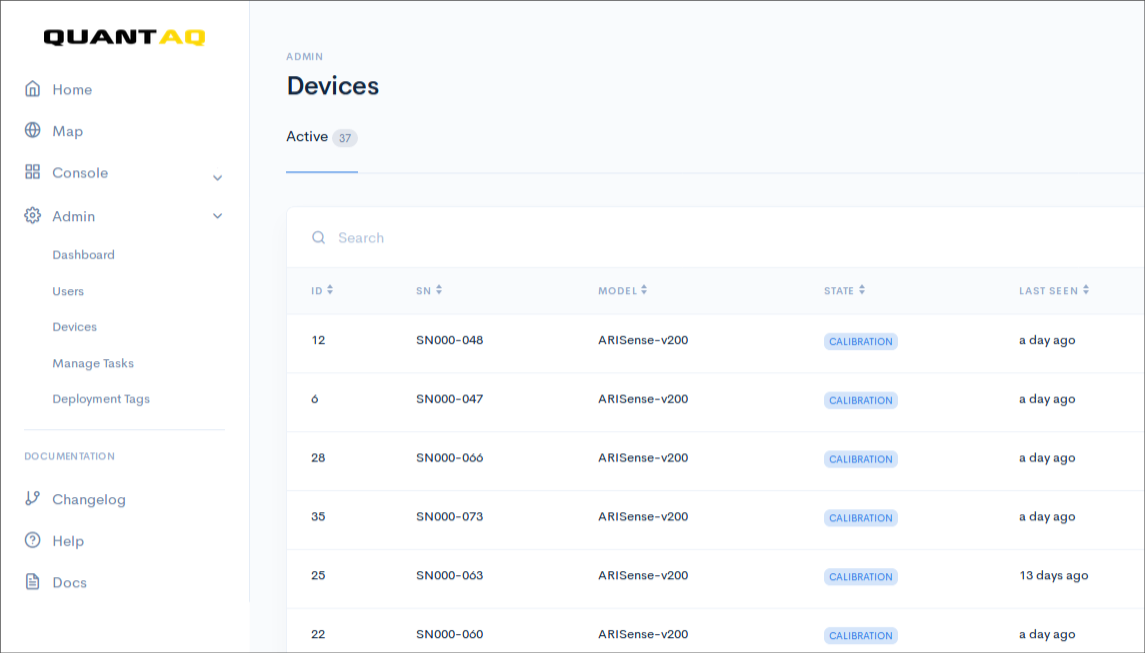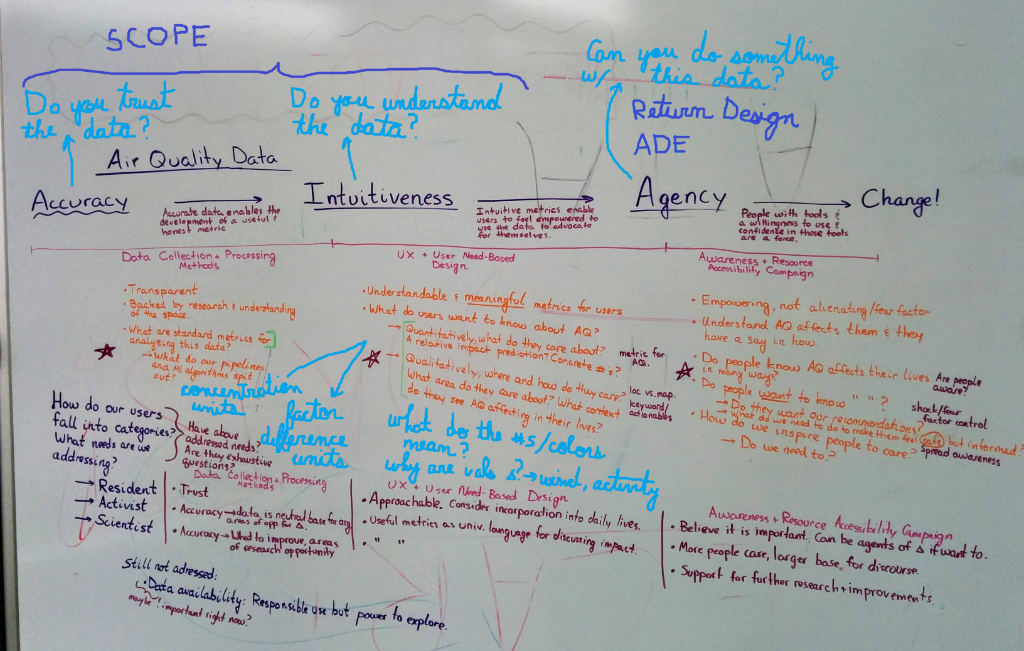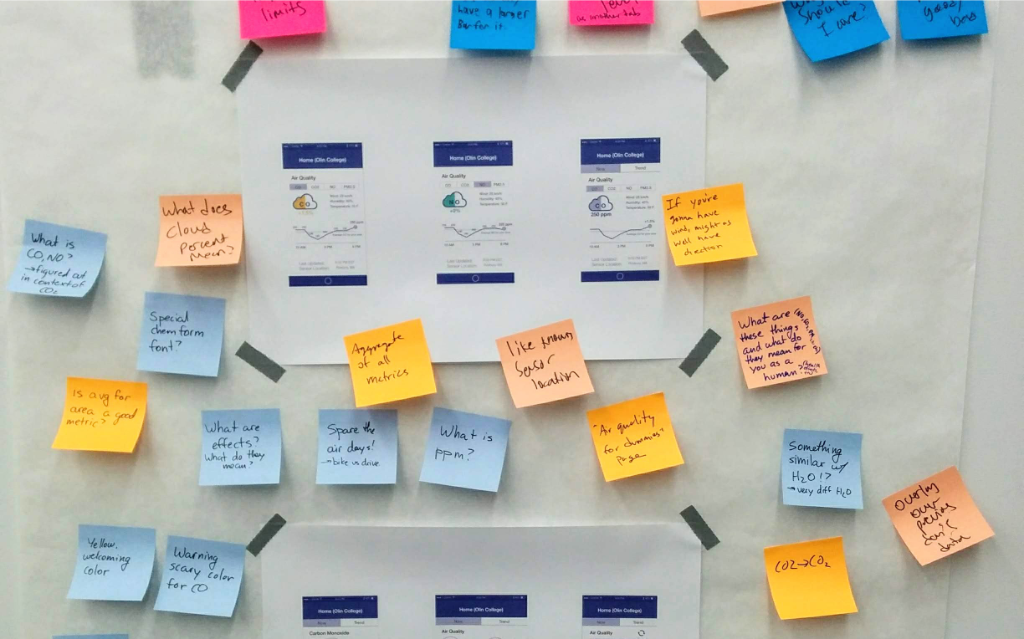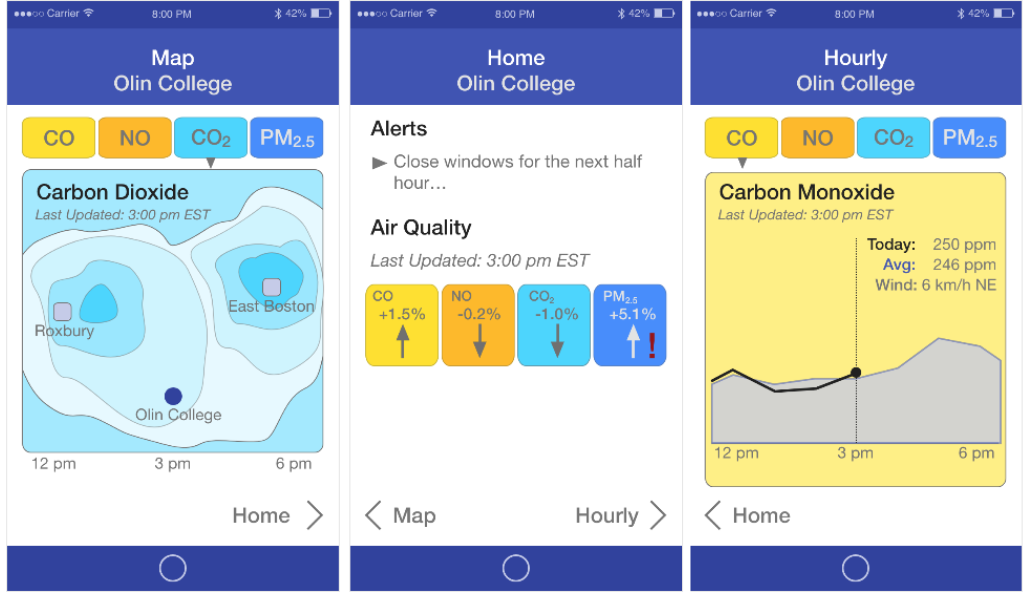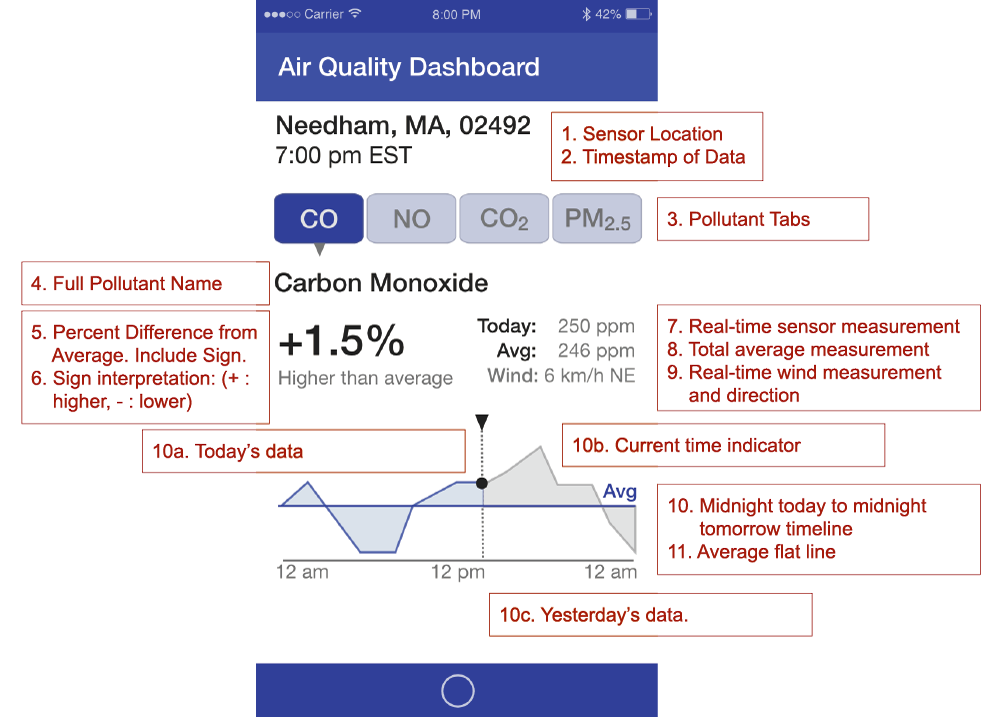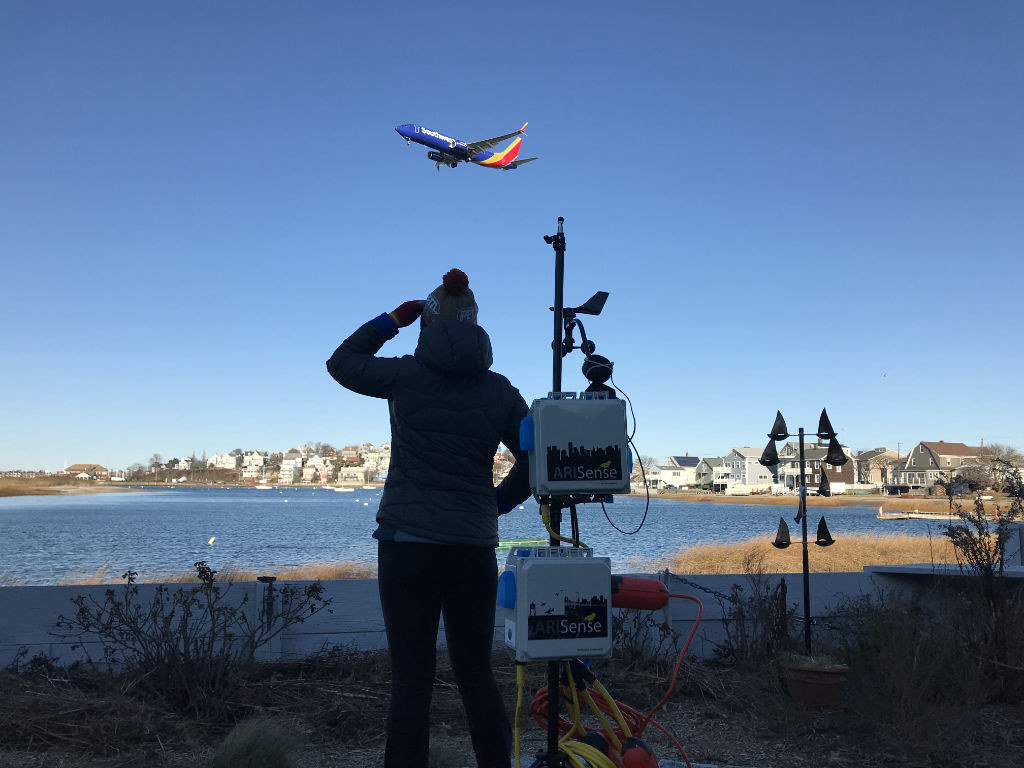
An airplane flies low above a neighborhood, emitting plumes of ultra-fine particles which negatively impact health.
For our senior capstone project, we partnered with Aerodyne Research Inc and AIRInc to build a pilot network of low-cost air quality (AQ) sensors in East Boston. Our team focused on the software infrastructure for collecting, storing, analyzing, and serving the data to both the public and scientists. QuantAQ, our liaison’s startup, is continuing the technical development of the project.
My role: Developed UX spec; Wrote embedded code to connect sensors and instruments to cloud; Designed public communication materials; Managed budget.

